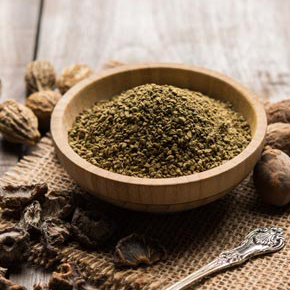Myopia, commonly known as near-sightedness, is a refractive error where distant objects appear blurry while nearby objects can be seen clearly. This occurs when the eye's shape causes light rays to focus in front of the retina instead of directly on it.
Causes of Myopia
1. Genetic Factors
- Family history significantly increases the risk of developing myopia.
2. Environmental Factors
- Prolonged close-up activities such as reading, screen time, or using digital devices.
- Insufficient time spent outdoors.
3. Structural Abnormalities
Herbal Remedies
- Axial myopia: The eyeball is longer than normal.
- Refractive myopia: Excessive curvature of the cornea or lens.
4. Other Contributing Factors
- Lack of proper lighting while reading or working.
- Poor diet and nutritional deficiencies (e.g., Vitamin A).
Symptoms of Myopia
- Blurred vision when looking at distant objects.
- Frequent squinting or eye strain.
- Headaches caused by overexertion of eye muscles.
- Difficulty seeing road signs, classroom boards, or other distant objects.
- Increased blinking or rubbing of the eyes.
Types of Myopia
1. Simple Myopia:
- Common, mild-to-moderate refractive error.
2. High Myopia:
- Severe near-sightedness, increasing the risk of retinal detachment or glaucoma.
3. Pathological (Degenerative) Myopia:
- Progressive condition leading to severe visual impairment due to changes in the retina.
Diagnosis of Myopia
1. Visual Acuity Test
Standard eye chart test to assess vision clarity.
2. Retinoscopy
Examines light reflection in the retina to determine refractive error.
3. Refraction Assessment
Measures the degree of myopia and prescribes corrective lenses.
4. Dilated Eye Exam
Inspects the retina for complications like detachment or macular degeneration.
Ayurvedic Perspective on Myopia
In Ayurveda, myopia is correlated with "Timira", a condition described under Drishtigata Rogas (eye disorders). Timira is caused by an imbalance in Pitta and Vata Doshas, leading to impaired vision.
Ayurvedic Treatment for Myopia
Panchakarma Therapies
1. Netra Tarpana
Medicated ghee (e.g., Triphala Ghrita) is applied to the eyes to nourish and rejuvenate.
2. Nasya (Nasal Therapy)
Administering herbal oils like Anu Taila helps balance Doshas and improves eye health.
3. Virechana (Purgation Therapy)
Detoxifies the body and balances Pitta Dosha, which governs vision.
4. Shirodhara
Continuous pouring of medicated oil on the forehead to reduce stress and improve vision.
Diet and Nutrition (Ahara)
Vata and Pitta-pacifying Diet:
- Include leafy greens, carrots, beets, and citrus fruits.
- Use ghee and milk to nourish eye tissues.
Hydration:
- Drink adequate water to maintain eye moisture.
Avoid
- Spicy, oily, and junk foods that aggravate Pitta Dosha.
Lifestyle Modifications:
1. Eye Exercises
- Palming: Rubbing hands together and placing them over closed eyes.
- Focusing exercises: Shifting focus from near to distant objects
2. Proper Screen Time Management
- Follow the 20-20-20 rule: Look at an object 20 feet away for 20 seconds every 20 minutes.
3. Adequate Rest
- Sleep for 7-8 hours to allow the eyes to recover.
4. Protective Measures
- Avoid direct sunlight exposure and use protective glasses when needed.
Herbal Remedies
1. Triphala
A blend of Haritaki, Bibhitaki, and Amalaki for improving vision and reducing eye strain.
2. Amalaki (Indian Gooseberry)
Rich in Vitamin C, it rejuvenates eye tissues.
3. Bhringraj (Eclipta Alba)
Enhances blood circulation and strengthens eye muscles.
4. Saptamrita Lauha
Classical Ayurvedic formulation to enhance vision.
5. Punarnava (Boerhavia diffusa)
Reduces inflammation and improves eye health.
By integrating Ayurveda with modern approaches like corrective lenses or LASIK, myopia can be effectively managed. Ayurveda emphasizes strengthening eye health naturally through Panchakarma, herbal remedies, and lifestyle modifications, aiming for long-term improvement and prevention. Regular consultations with an Ayurvedic practitioner and ophthalmologist ensure a holistic approach to vision care.








